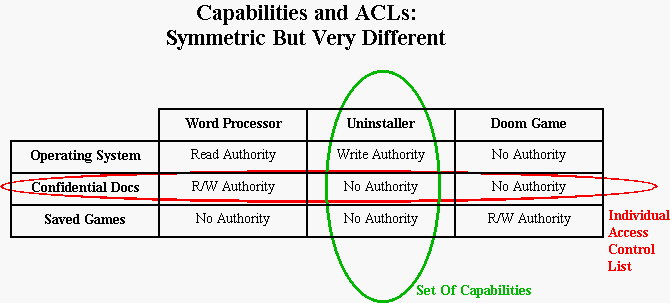
<< Previous << [Session1 Index] >> Next >>

Of course, this symmetry hides almost as much as it reveals, because such a table suggests that it doesn't make a difference which way you go: rows, columns, who cares? As we have pointed out repeatedly here, it makes a very big difference, and you must care. For example, only by using columns (i.e., capabilities) can we solve the The Confused Deputy Problem.
A small distinction in the terminology hints at another crucial difference between ACLs and capabilities: with the ACL model, each object has just one list, while with the Capability model, each object has a whole set of different , separable capabilities. Capabilities are fine-grained by nature; if the developer finds he doesn't have a facade on a capability that is quite as limited in authority as appropriate to maintain the Principle of Least Authority, it is generally trivial to whip up a new facade with an even narrower authority for the new purpose (though security-oriented design will lead you to identify and separate out individual capabilities early on).
This fine-grained nature of capabilities becomes more apparent as you use them more, and evolve in the Path Of Security Thinking.